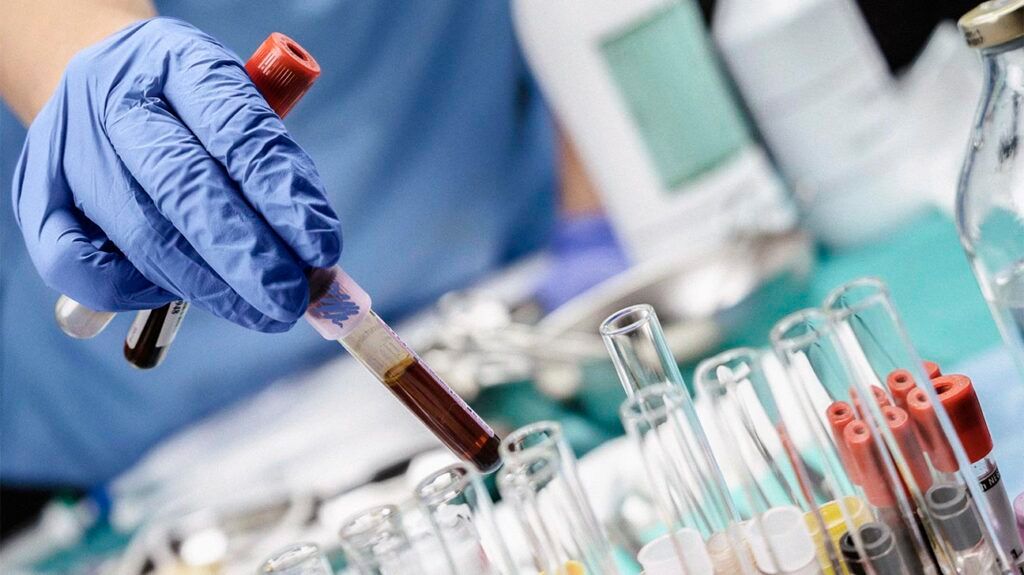The causes of primary versus secondary hyperthyroidism differ. Thyroid problems cause primary hyperthyroidism while problems in the pituitary gland cause secondary hyperthyroidism.
Hyperthyroidism occurs when an overactive thyroid gland produces excessive thyroid hormones. The high levels of thyroid hormones increase the body’s metabolism, leading to symptoms, such as weight loss, tremors, and a rapid or irregular heartbeat.
Doctors broadly categorize hyperthyroidism as primary or secondary. In primary hyperthyroidism, the problem originates within the thyroid gland itself. Conversely, secondary hyperthyroidism results from excessive stimulation of the thyroid gland by the pituitary gland.
Understanding the differences between primary versus secondary hyperthyroidism is crucial for effective treatment, as the therapeutic approaches differ.
This article compares primary versus secondary hyperthyroidism, their causes, and treatments.

Primary and secondary hyperthyroidism both result from an overactive thyroid gland, but they have different causes.
Primary hyperthyroidism occurs when the thyroid gland produces too much thyroid hormone. This can be
Secondary hyperthyroidism is less common. It occurs when the pituitary gland, a small gland at the base of the brain, sends out excessive thyroid stimulating hormone (TSH). TSH tells the thyroid how much thyroid hormone to make. If TSH levels are high, the thyroid produces surplus thyroid hormone.
The most common cause of secondary hyperthyroidism is a pituitary adenoma. This benign tumor of the pituitary gland secretes excessive amounts of TSH, disregarding the body’s standard feedback mechanisms that maintain hormone balance.
The
- Graves’ disease, which is an autoimmune disorder where the immune system stimulates the thyroid too much
- toxic adenomas, which are nodules in the thyroid gland that secrete thyroid hormones
- subacute thyroiditis, or inflammation of the thyroid gland
Other causes of hyperthyroidism can include:
- getting too much iodine from diet or supplements
- metastatic thyroid cancer
- other types of thyroiditis
- certain medications
- gestational hyperthyroidism, which is an overactive thyroid
brought on by pregnancy
In secondary hyperthyroidism, the thyroid gland is not the cause of the condition. Instead, the pituitary gland causes the thyroid to make too much thyroid hormone.
Benign tumors in the pituitary can secrete a high amount of TSH, which in turn, overstimulates the thyroid gland, leading to secondary hyperthyroidism.
In comparison to the other causes of hyperthyroidism, pituitary adenomas are
When diagnosing primary or secondary hyperthyroidism, healthcare professionals rely on specific blood tests to
In primary hyperthyroidism, TSH levels are usually low because the pituitary gland reduces TSH production in response to high thyroid hormone levels. In contrast, free levels of T4 or T3 are high. This inverse relationship between thyroid hormones and TSH is a key indicator of primary hyperthyroidism.
Conversely, in secondary hyperthyroidism, excessive pituitary gland production elevates the TSH levels. The elevated TSH drives the thyroid gland to produce more T3 and T4, meaning free T4 and T3 levels may be high or at the upper end of their typical ranges.
Primary hyperthyroidism treatments target the thyroid gland’s function. Meanwhile, secondary hyperthyroidism treatments focus more on the pituitary gland, or the factors stimulating excessive TSH production.
Treatment options for primary hyperthyroidism include:
- Antithyroid medications: Drugs, such as methimazole (Tapazole) and propylthiouracil (Propycil), can effectively reduce thyroid hormone production.
- Radioactive iodine therapy: This involves taking radioactive iodine orally, which destroys overactive thyroid cells, reducing hormone levels. It is effective, but it can result in an underactive thyroid, or hypothyroidism. If this happens, a person needs lifelong thyroid hormone replacement therapy.
- Surgery (thyroidectomy): Removing all or part of the thyroid gland is another treatment route. If a person receives this treatment, they will need to take replacement thyroid hormones throughout their life.
If a pituitary adenoma is causing secondary hyperthyroidism, treatments may include surgical removal of the tumor, radiation therapy, or medication to shrink or control tumor growth. Doctors may also reduce medications to reduce TSH production.
The term “thyrotoxicosis” refers to the clinical effects of excessive thyroid hormone levels in the bloodstream or tissues. Doctors do not divide it into primary or secondary categories.
Graves’ disease is the
A person could also have excessive thyroid hormone levels due to taking too much thyroid medication for an underactive thyroid. Alternatively, if a person has thyroiditis, the thyroid can release stored hormones, resulting in high levels in the blood.
Secondary hyperthyroidism is a rare cause of thyrotoxicosis, but it can happen as a result of high TSH levels.
The outlook for both primary and secondary hyperthyroidism is
Primary and secondary hyperthyroidism both involve an overactive thyroid that produces too much thyroid hormone. However, they have different causes.
In primary hyperthyroidism, a problem with the thyroid itself causes an overproduction of the hormones. In secondary hyperthyroidism, it is a problem with the pituitary gland that raises the thyroid stimulating hormone (TSH) levels, which then stimulates the thyroid.
Understanding the differences between primary versus secondary hyperthyroidism can help clinicians decide the best treatment. They can determine this via blood testing.
